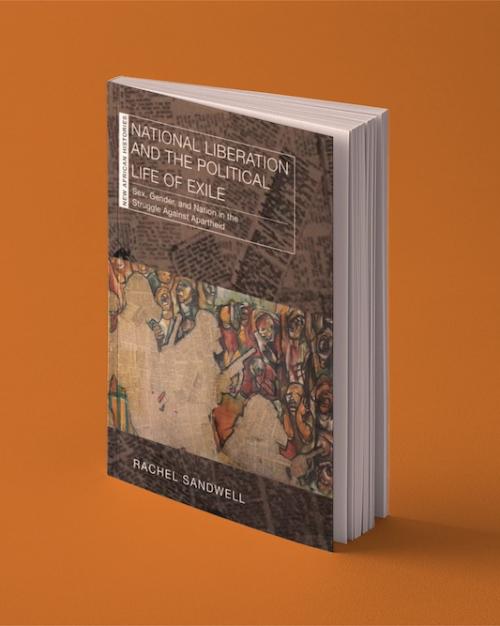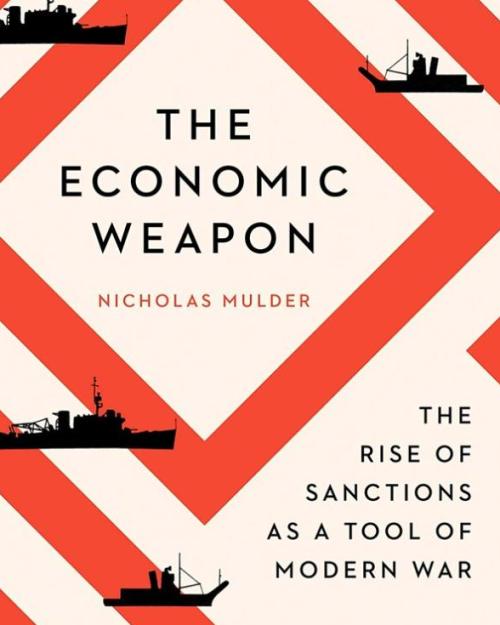Economic sanctions have long been viewed as a nonviolent strategy for deterring a host of threatening actions – from land grabs to the development of nuclear weapons – by targeting vital commodities, such as textiles and fuels, as well as financial assets. But what was initially adopted as a peacekeeping tool in the years following World War I has ironically become a hostile act that now resembles a form of warfare, argues Nicholas Mulder, assistant professor of history in the College of Arts and Sciences, in his new book, “The Economic Weapon: The Rise of Sanctions as a Tool of Modern War,” published Jan. 11 by Yale University Press.
Mulder spoke with the Chronicle about the book.
Question: How have sanctions evolved from their initial adoption as a peacekeeping tool to their use today?
Answer: The range of goals that we pursue by using sanctions has grown dramatically. As initially conceived by the victors of World War I, the main aim of threatening to impose sanctions on a country was to prevent diplomatic disputes, usually over territory, from escalating into wider wars. Today, sanctions are still used as a punishment for or deterrent against territorial annexation. But they are also imposed over human rights violations, to stop nuclear weapons development, to fight money-laundering, to contest election results, to force the release of political prisoners or even entire changes in government, and to limit the transfer of strategic technologies.
Q: Broadly speaking, what makes sanctions “warlike”?
A: The most important link between sanctions and war is that they were born out of the conditions of total war, and that the theory of how they worked was modeled on war. Allied leaders thinking about the shape of a postwar international organization – what eventually became the League of Nations – wanted to make this new institution capable of stopping any emerging war in its tracks. To do that, they looked for some kind of force that was at least as powerful as war itself, but which could be counterposed to war to halt its march. They found this force in the new techniques of economic blockade developed in World War I: cutting off a country from all access to the international economy and waiting for it to exhaust itself or succumb to political revolution or social collapse.
Both in their underlying goals (regime change and breaking the will to resist) and in their effects on civilian society – immiseration, starvation, disease, bankruptcy – these approaches to sanctions can produce measures whose function and consequences are identical to war. But the means are different.
Q: Your book references a 2015 estimate from a UN official that one-third of the world’s population lives in countries that are under some form of economic sanctions. How did a tactic that was intended to be so forceful, and fearsome, come to be so commonplace?
A: I think the spread and normalization of sanctions has a lot to do with how views of war and peace have changed in the Western world. Set against the backdrop of the era of total war and the horrors of the early twentieth century, restrictive measures like sanctions have come to seem to us like a mild form of coercion. Today, the U.S. government and the EU find simple sanctions like travel bans, asset freezes and import prohibitions on specific goods relatively easy to impose.
It’s important to note that many of the sanctions in force today fall in this category of more mundane restrictions that do not bear much resemblance to full blockade measures or economic war. As a result we are seeing an overgrowth of sanctions built up by measures that are each quite light in their individual impact. So one major reason that sanctions became so commonplace is that their intensity was scaled down. This has made the majority of sanctions less directly destructive. But it has also reduced their efficacy in producing behavioral change over time.
Q: How have sanctions impacted smaller countries compared to large nation-states?
A: As I show in my book, some cases of successful economic sanctions used in peacetime worked as pure threats. The deterrent effect of possible sanctions was enough to restrain the aggression of small states. In 1921, Yugoslavia was forced to break off an incursion into northern Albania by the threat of a League of Nations embargo. Another Balkan conflict between Greece and Bulgaria in 1925 was defused in a similar way. But larger nation-states and empires have in general proven more difficult to subdue. Fascist Italy, Nazi Germany and militarist Japan all responded to sanctions not by backing down but by becoming more aggressive. Territorial expansion was a path, in their eyes, to secure control over the key material resources that sanctions threatened to sever them from: grain, coal, iron ore, oil and so forth.
That being said, the size of a country’s territory is not always a good predictor of its vulnerability to sanctions. Commodity exporters tend to be more vulnerable than industrial economies to external pressure, but even here there are important exceptions, like the agricultural sector of Cuba and the hydrocarbon exports of Qatar, which have withstood blockades quite well. Meanwhile, the effects of sanctions on societies like Venezuela and North Korea have been grievous for civilians, in part because exploitative cliques tend to form around besieged governments.
Q: Looking back over the past 100 years, how successful have economic sanctions proved as a strategy? What lessons can be drawn from this history?
A: The history of sanctions is a story of experimentation and unintended consequences. As tools for changing the behavior of other states, the empirical record is quite clear that they fail more often than not. As ways of grinding down opponents’ material strength they might be more successful. But we must ask at what cost. Long-term undeclared economic war oftentimes entrenches antagonism between countries instead of resolving it.
The paradox of sanctions is that effective use relies on a credible promise of their removal. You must commit to lifting restrictions when your demands are met. Right now, many Western governments are stuck in a ratcheting problem where they can only ramp up economic pressure but never lift restrictions. This not only defeats the entire democratic-behavioral model for sanctions, it also makes every new sanction less and less likely to succeed.
Interwar sanctions were seen as a negative economic weapon that worked by withholding goods and money. But the book uncovers that from their origins in World War I there was also a complementary project being developed. In the League of Nations, a sizeable group of smaller countries advocated for a “positive” economic weapon: institutions to supply aid, money and resources to countries that had fallen victim to aggression. As the world faces interlocking crises, from the pandemic and the climate crisis to renewed geopolitical instability, this positive agenda is worth renovating as a way to confront major global problems more constructively.
Read the story in the Cornell Chronicle.




